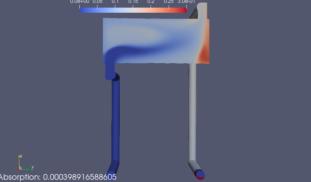Please wait...
About This Project
The American Lung Association estimates that 32 million Americans are affected by lung diseases, many of which are still not fully understood. Hyperpolarized xenon (HP Xe) MRI lung imaging is emerging as an important tool to better understand lung disease and develop treatments. However, the potency of HP Xe is up to three times less than its theoretical potential, which has hampered economical application. We’ve developed a computational model to identify inefficiencies in the process.
More Lab Notes From This Project

Browse Other Projects on Experiment
Related Projects
Working towards a low-cost ostomy bag that doesn't leak
Ostomy bags are a daily medical necessity for 15 million people globally. However, these bags often delaminate...
Thermal and Fluid Dynamical Effects on the Efficiency of Hyperpolarized Xenon Production
The American Lung Association estimates that 32 million Americans are affected by lung diseases, many of...
Targeted Drug Delivery by using Magnetic Nanoparticles
What if we could use a novel approach for delivering currently injectable drugs to the body without syringes...





